The
History
OF
Addiction and
Sobriety in Cinema

Substance use disorder (SUD) is a chronic mental health condition that has affected almost 21 million Americans. It is a severe and often misunderstood ailment that features as an underlying plot point in many cinematic pieces throughout modern history.
Throughout time, the social stigma surrounding drug and alcohol abuse has shifted, allowing for a more open, truthful, and impactful representation of drugs and alcoholism in film.
So, why is an honest depiction of addiction and recovery in cinema so important? Whether we realize it or not, we are highly influenced by what we see in mainstream media. Glamorizing the devastating effects of drugs and alcohol creates the illusion that there are no real consequences to your actions when the harsh reality is quite the opposite. It also plays down and diminishes the genuine struggles of those suffering greatly at the hands of a SUD.
Opening the minds of others to the destructive nature of addiction can help destigmatize the condition. It is not a crime but a serious health problem that must be addressed before the lives of countless more Americans are lost to the disease.
Seeing your own situation played back to you authentically onscreen validates the feelings of those who can relate to struggling with addiction and inspires them to move forward with their rehabilitation.



From inspiring journeys down the road to recovery to the suspenseful, hard-to-watch descent into the depths of despair, our list of the best drug and alcohol films is packed full of powerful titles that have marked the film industry landscape.

Continue reading to discover more about historical representations of addiction and sobriety and how they hold up against more contemporary themes in later years.

Chapter 1
The Waging War On Drugs
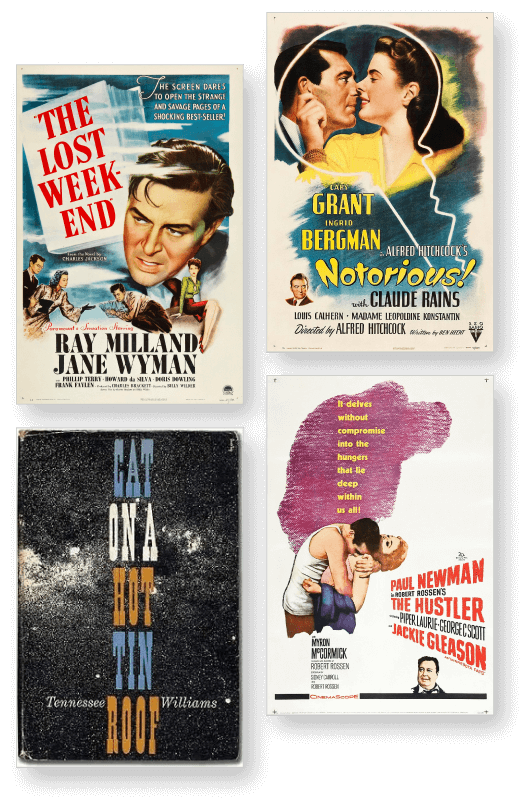
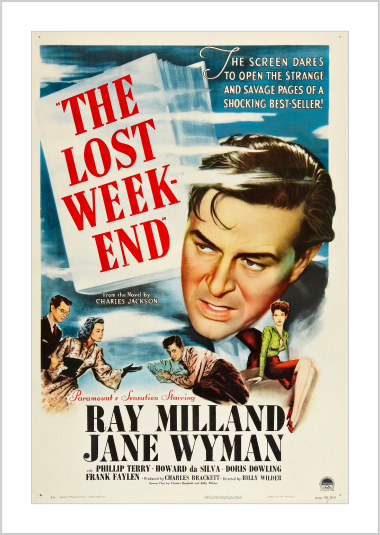
Billy Wilder presents the devastating realities of alcohol addiction in his gritty film noir, The Lost Weekend.
This film follows 5 days in the life of chronic alcoholic Don Birnam (Ray Milland) as he attempts to drink his life away, depicting the suffering he causes to himself and those most precious to him.
Alcoholism was rarely shown on screen during the 1940s, much less in the painstakingly real way Wilder portrayed his main character’s struggle. Upon its release, The Lost Weekend touched the hearts of many, especially those who could relate to Don’s afflictions.
The resilient love received by the person most precious to him gave Don the courage to fight his inner turmoil and set out on the road to recovery- a sentiment perhaps shared by many who have endured similar battles with loved ones by their side.

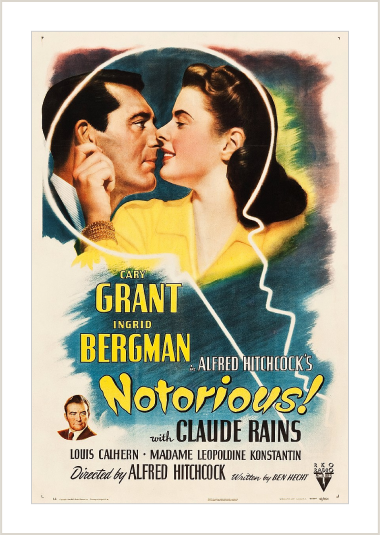
Alfred Hitchcock’s 1946 phenomenal spy noir thriller Notorious sees Ingrid Bergman and Cary Grant star in a twisted romance set in post-World War II. Bergman’s character Alicia is the daughter of a convicted Nazi spy and is tasked by South American agents to infiltrate a Nazi organization that escaped to Brazil.
The resilient love received by the person most precious to him gave Don the courage to fight his inner turmoil and set out on the road to recovery- a sentiment perhaps shared by many who have endured similar battles with loved ones by their side.
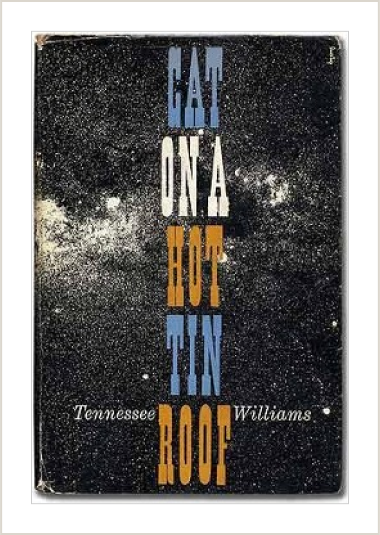
Motifs of alcoholism, deceit and broken manliness are explored boldly in Richard Brooks’ 1958 Hollywood adaptation of Cat On A Hot Tin Roof.
Brick Pollitt is an ex-football hero and alcoholic who spends his days drinking and resisting the affections of his wife, Maggie.
Brick blames himself for being unable to help his friend, who he lost to suicide and turns to drink to shield himself from reality. His reliance on alcohol is intertwined with the death of a friend, a turbulent marriage, and strained familial relationships.
He searches for moments of inner peace through his liquor bottle. Brick’s recovery begins with a conversation- a reflection of his life with his terminally ill father that leads to a reconciliation.
Robert Rossen’s Oscar-winning sports drama The Hustler left a lasting impression on its audience with themes of greed, alcoholism, and gambling.
“Fast Eddie” (Paul Newman) is one of America’s most talented pool players and has made a smart profit from hustling unsuspecting pool players out of their money.
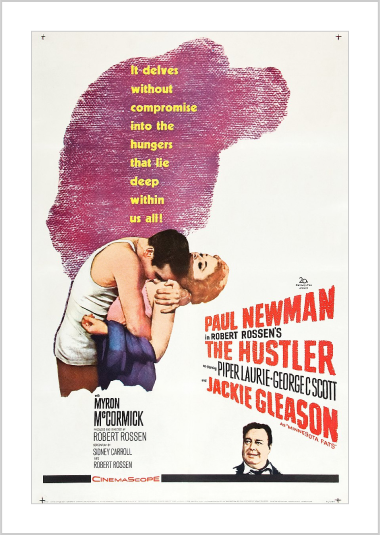


But this wasn’t your typical movie romance. Sarah was plagued by an alcohol addiction that left her reliant on Eddie while he desperately craved success in his career. Their relationship unsurprisingly deteriorates into a liquor-fueled disaster.
After the harrowing suicide of his girlfriend, Eddie’s reconciliation is hinted at towards the end of the film. The Hustler is a cautionary tale about the life-altering damage gambling and drinking can cause to you and those around you.
J.P Miller’s 1962 drama Days Of Wine And Roses is a hard-hitting tale depicting the life-ruining effects of alcohol addiction. While many films tiptoe around the harmful effects of alcoholism, Miller confronts its destructive nature through the tragic downfall of Joe Klay (Jack Lemmon) and Kristen Arnesen (Lee Remick).
Binge drinker Joe starts dating Kristen
Binge drinker Joe starts dating Kristen, who, after some gentle persuasion, takes to social drinking to spend time indulging in his vices. The two eventually get married and have a daughter.
Joe joins Alcoholics Anonymous
Their drinking tendencies soon spiral into severe alcoholism. Their alcohol addiction is highlighted as the cause of their life falling apart, and Joe finds himself in a mental institution after acting out in public. Joe joins Alcoholics Anonymous, which sets him on the road to recovery.
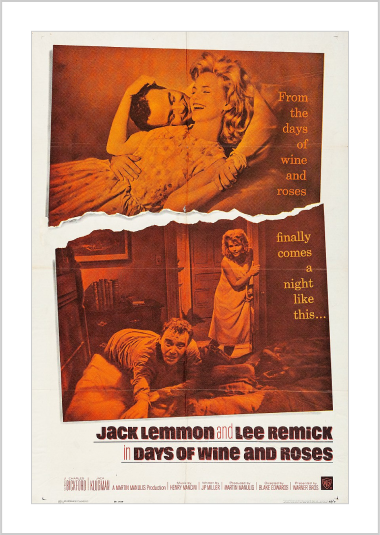

Joe’s story installs hope in those watching who are undergoing their journey to recovery. Joe is a perfect representation of the hope that still exists for those who have seen complete darkness and despair in the face of their substance abuse.
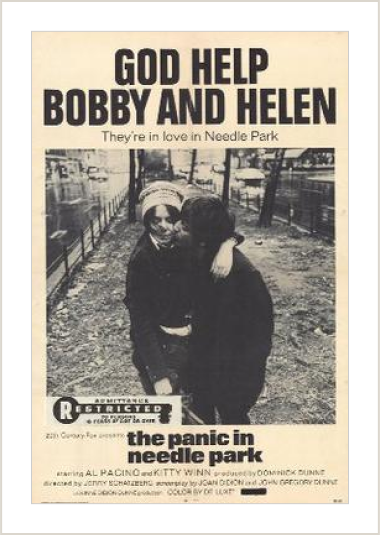
Heroin abuse was rampant during 1970s America, with drug-induced crime pushing heroin addiction to the forefront of President Nixon’s drug policy agenda.
After the Hippie movement normalized the recreational use of hallucinogenics, an onslaught of anti-drug movies emerged from the scourge of dependency issues in general society.
Many gave in to stereotypes and LSD trip clichés until Jerry Schwartzberg churned out a film that would change the trajectory of substance abuse portrayals in cinema. Panic In Needle Park is a film based on heroin addicts around Sherman Square, subsequently branded ‘needle park’
The resilient love received by the person most precious to him gave Don the courage to fight his inner turmoil and set out on the road to recovery- a sentiment perhaps shared by many who have endured similar battles with loved ones by their side.

We are taken through the tormented minds of those inflicted, and most scenes are challenging to watch. Heavy topics are handled with a deep sense of uncompromised realism. The film was shot on-location in the heart of a crime-riddled New York city, adding to the grit and authenticity that this film projects.

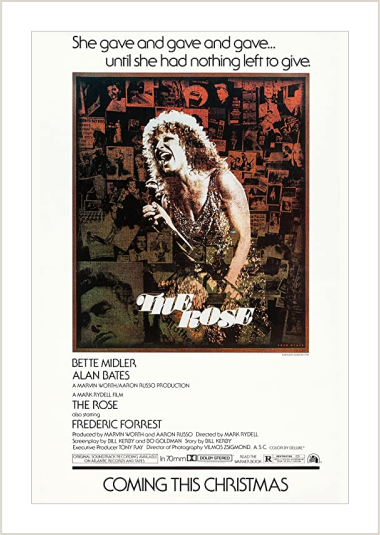
Mark Rydall’s story The Rose follows the life of a self-destructive rock star Mary Rose who struggles with the pressures of her career and the impractical demands of her abusive business manager.
Despite all the fame and glory, Mary’s personal life was isolating and exhausting. She has an outspoken exterior but beyond the surface lies insecurity and a craving for approval- intensified by alcoholism and past drug addiction.
The bleak ending to this film encourages a deep reflection within the audience. We are left contemplating the ultimate downfall of Mary Rose and how her death could have been prevented, like so many others who suffer from addiction.

Chapter 2
The Emergence Of Crack Cocaine And Continuation Of The War On Drugs

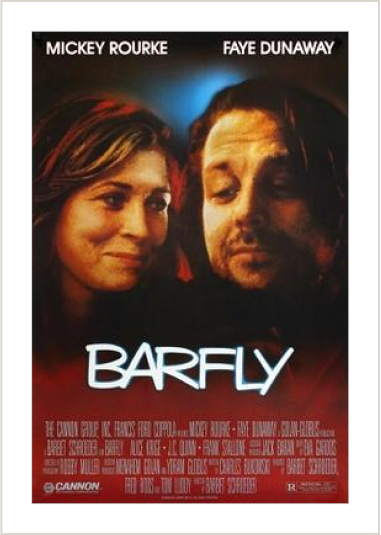
Barfly is a heavily character-driven movie about the alcoholic poet/ author Charles Bukowski.
Written by Bukowski himself ,
this piece is semi-autobiographical and represents some of his heavier drinking days. Bukowski is rather unapologetic about his drinking problem but depicts his life in this film with an undertone of self-loathing.
Much different from flashy Hollywood films, Barfly has a gritty ensemble of problematic characters trapped by their own vices.
Michael Keaton stars in Glen Gordon Caron’s 1988 drama, Clean and Sober.
Successful estate salesman Daryl Poynter checks himself into rehab to escape trouble after embezzling his company’s money and waking up next to a woman who has suffered a heart attack from an overdose. Daryl soon admits to his problems with substance abuse and realizes that this is where he needs to be all along.
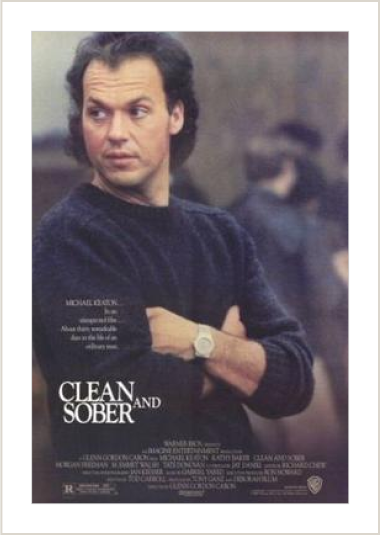

Clean and Sober travels deep into the heart of darkness and emerges as a hopeful story to encourage others to get their life on track, with themes that hit close to home for many who have struggled with addiction, Clean and Sober highlights the benefits of bettering oneself and finding support in those around you.
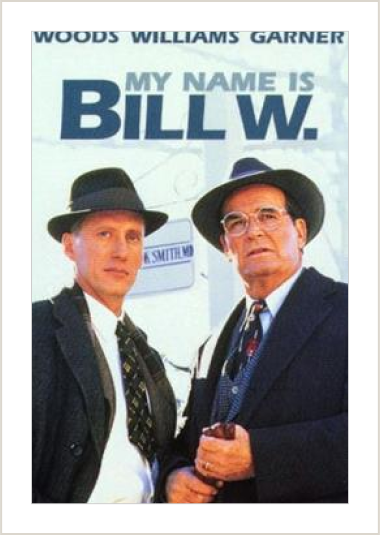
This historical docudrama follows the foundation of Alcoholics Anonymous, an international organization that helps alcoholics with their personal recovery and continued sobriety.
Those who have received help from the group can find strength in seeing its development and feel certain sentiments that only alcoholics in recovery would understand.
This film has some powerful moments that are relatable to those in recovery. With words that strike a chord in the hearts of recovering alcoholics, this film acknowledges alcoholism as a disease that has a tight hold over those afflicted.
It does not present alcoholism as a character flaw but as a debilitating sickness. As seen through the inspiring journey of our main protagonist, however, this sickness can be cured.
Seeing a character onscreen going through troubled times that mirror your own can validate your feelings and diminish that sense of isolation. My Name Is Bill W is a poignant story that can inspire others to take a step in the right direction and reach for help, showing them that they are not alone with a story of hope and healing.

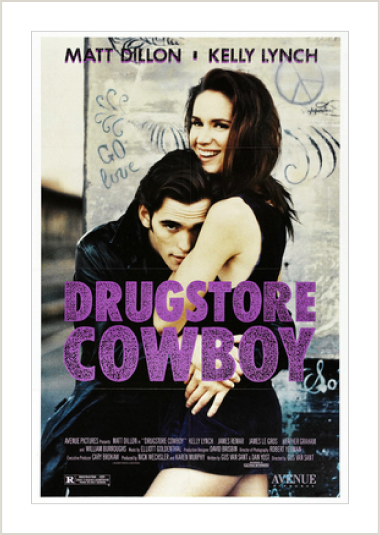
Drugstore Cowboy is set in the early 1970s when the use of recreational drugs was more widely tolerated by wider society in the wake of the cultural revolution.
It follows the life of Bobby (Matt Dillion), a 26-year-old man who has been addicted to opioids from a young age. The film depicts Bobby traveling with his wife and two friends raiding pharmacies and hospitals to steal drugs and sustain their addiction.
After a girl from their small crew dies from an overdose, Bobby, in a paranoid haze, reflects on the path he is walking down, deciding to leave his friends and join a methadone program in an attempt to get his life back.
The film has a realistic depiction of an addict’s lifestyle, sacrificing relationships and breaking the law to stay high. Our protagonist suffers psychological effects from his addiction, like paranoia, anxiety, and compulsive behavior.

Chapter 3
The Problematic Glamorization Of Heroin
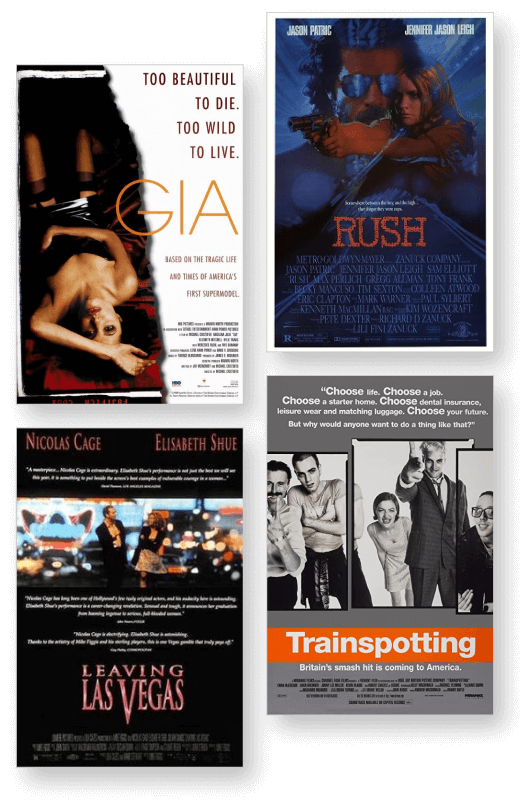
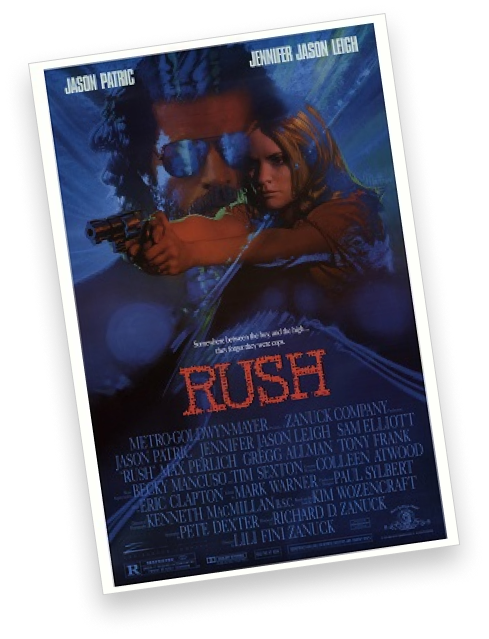
Rush is a grueling 1991 film about two undercover narcotics agents who become heavily addicted to the very drugs they are trying to keep off the streets.

They keep up appearances by taking drugs in front of dealers so as not to blow their cover, but this has severe repercussions that neither of them expected.
Rush is an eye-opening story of how quickly addiction can take hold of you. The mentality that you can prevent addiction with a strong mindset is kicked to the curb as we watch a seasoned narcotics veteran fighting off hallucinations after getting sucked into the drug culture.

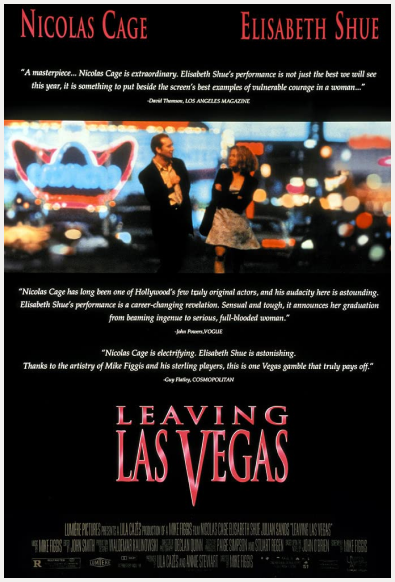
Leaving Las Vegas is a tragic and powerful drama about the life of an alcoholic Hollywood screenwriter Ben Sanderson (Nicolas Cage), who loses everything because of his drinking habits. With nothing left to live for, he arrives in Las Vegas with plans to drink himself into oblivion.
Leaving Las Vegas is a sad, visceral portrait of the final stages of alcoholism before it envelops a person’s soul. It is a story of two desperate people using love as a final resort to alleviate their pain. Ben’s life depicts the reality for many, as his life is torn from him and replaced with a liquor bottle.
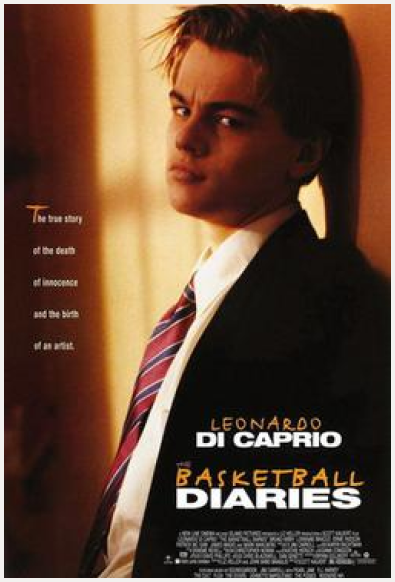
Basketball Diaries follows the perspective of a young person falling victim to addiction. It outlines the events that lead artsy high school basketball player Jim Carroll (Leonardo DiCaprio) to fall into the abusive world of drug dependency, ending his dreams of pro sport and turning his life upside down.
Jim’s life becomes a downward spiral, and he eventually ends up in jail, where he spends 6 months getting clean. While highlighting the unsightly circumstances and harsh consequences of substance abuse, Basketball Diaries also depicts jail time as a means of reflecting, sobering up, and beginning anew.
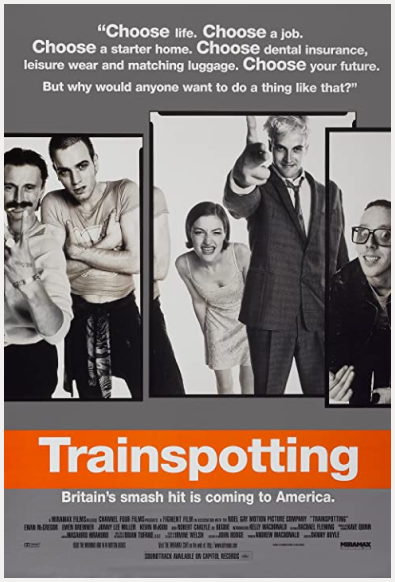
Trainspotting is an incredible piece depicting the life of Renton, a drug addict trying to get his life back on track but is set back by his unreliable group of friends. Set in late-80s Edinburgh, Trainspotting remains one of the most potent portrayals of the torment and anguish that stems from a devastating heroin addiction. It was a landmark British film of the 20th century.
Not shying away from the damaging realities of substance abuse, Trainspotting is a powerful film wrapped up in dark humour and youthful camaraderie. It reflects the period of an Edinburgh district that, at the time, was contending with widespread unemployment and extensive substance abuse problems.

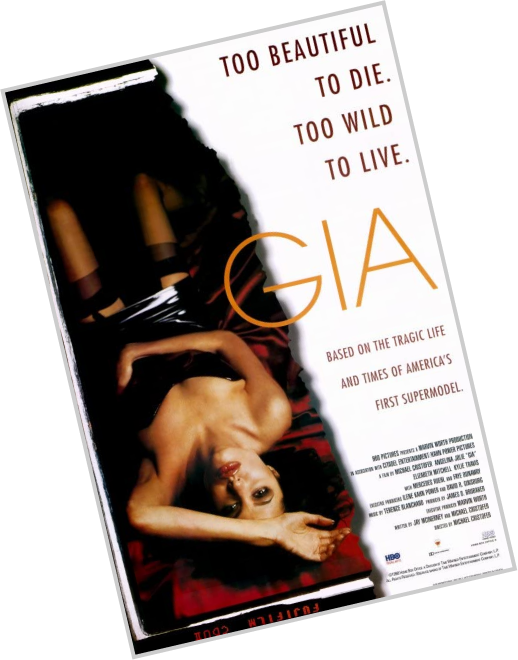
Gia is a heartbreaking story of how deep-rooted addiction can lead you down a path of loneliness and self-destruction.
Gia moves to New York City to become a fashion model and, through the efforts of her talented agent, quickly rises to the forefront of the modelling industry. However, fame and glamour are not all it’s cracked up to be.
Gia’s gnawing isolation and growing depression led her to take mood-enhancing drugs, leaving her addicted to cocaine and heroin. Gia’s story is the heart-breaking reality for thousands of families who have lost a loved one to addiction. Gia’s life was tormented and tragic.
She was unable to fight her addiction and, just when she was showing signs of recovery, fell victim to an incurable disease. While the ending of this film may seem harsh and unfair, it is devastatingly real.


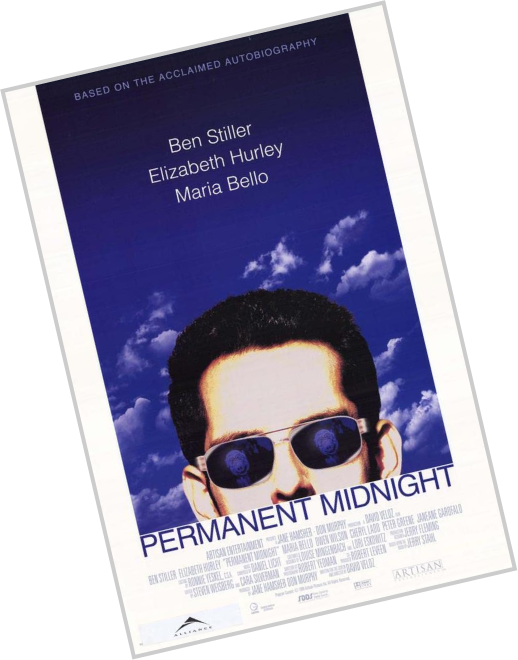
Based on a true story, Permanent Midnight tells the story of Jerry Stahl, a successful Hollywood television writer whose worsening drug habit swiftly derails his life.
By now, you should have a good sense of how these stories go. While different in the details, they are fundamentally the same:
The protagonist makes a series of bad choices to stay high and escape whatever mental discomfort they are feeling at the time. Everything else is secondary.
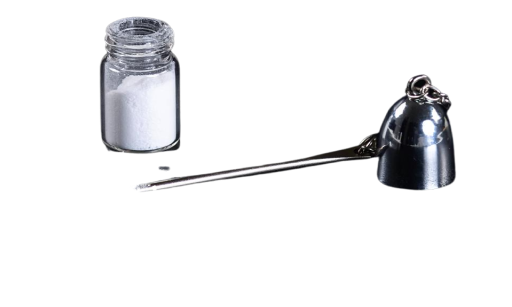
Permanent Midnight is a dark cautionary tale that outlines the chilling changes to a person’s character that evolves from drug addiction. Jerry’s story is told by his present self as a sort of reflection on his past.

Chapter 4
Changing Attitudes
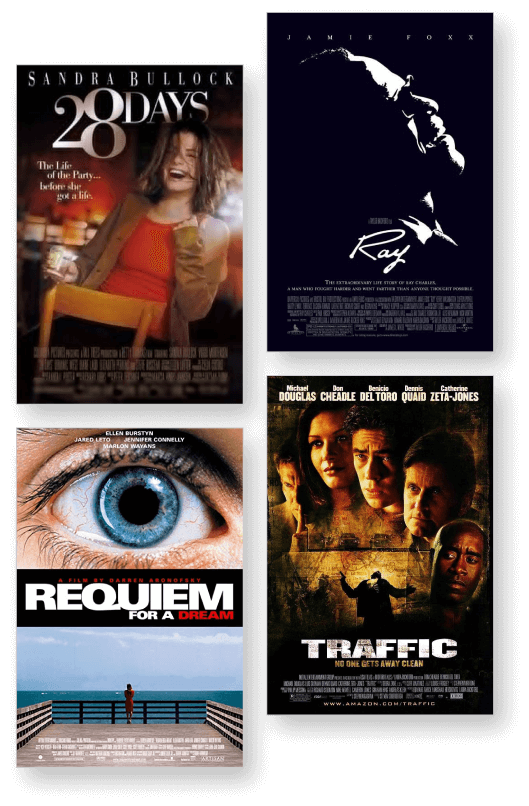
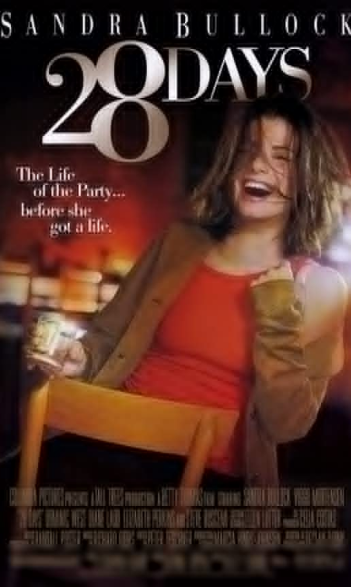
28 days is a 2000s comedy-drama film starring Sandra Bullock.
It follows the deplorable actions of Gwen Cummings, a newspaper columnist who spends most evenings in a drunken haze. 28 Days is a recovery story as we are taken through Gwen’s journey from denial to acceptance.
We first see Gwen living out her reckless lifestyle filled with beer, drugs and parties. Her unpredictable actions cause harm to those around her- especially her sister Lily.
Arriving late to Lily’s wedding, Gwen knocks over her wedding cake, steals a limousine and crashes it into a house.
After making a spectacle out of herself, Gwen is admitted to a rehab center, where she is forced to confront her addiction and chooses to make a better life for herself.

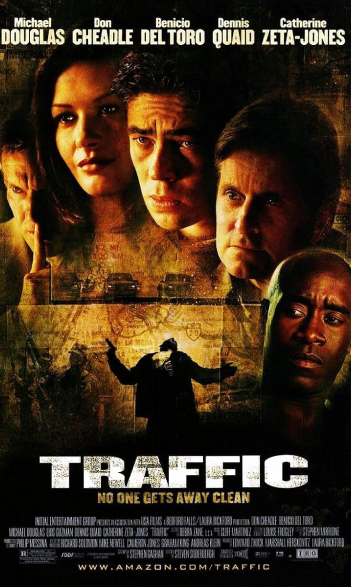
Steven Soderbergh brings us a dire and truthful insight into the American drug trade as we watch the lives of four people intertwine with the ongoing war on drugs.
Traffic outlines the futility of hardening down on drug laws rather than looking deeper into the issue at hand. It highlights the view that drug abuse is an epidemic that has touched much of society rather than a crime.
Traffic touches on the lives of two DEA agents, two Mexican drug enforcement officers, an Ohio state supreme court judge appointed the drug Tszar, and his teenage daughter, who is addicted to crack cocaine. These are just to name a few. These stories run parallel with each other, sometimes intertwining. The hopelessness of anti-drug laws is a running undertone of this film, demonstrated through the lucrative advances of illegal drug cartels.

Traffic calls upon the need for an overhaul of American drug laws.
While it is true that drugs influence crime from the sheer desperation of addiction, a more reasonable policy could result in a safer society. Traffic reflects a broken system that does nothing for those in desolate need of help and support.
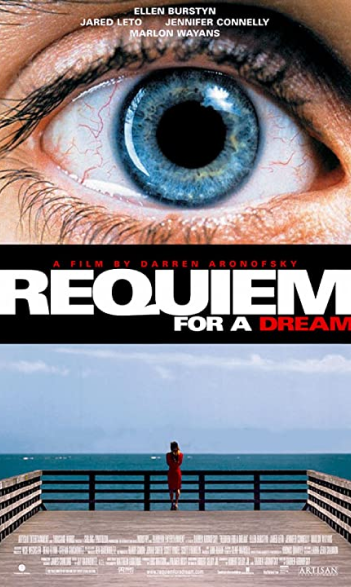
Requiem For A Dream is a relentless portrayal of four characters’ descent into madness as they succumb to their drug addiction.
There is no happy ending, no hope for a better future, and no cliche redemption seeing the protagonist turn over a new leaf after a few meetings and a liberating conversation.

Requiem For A Dream is a harrowing watch because it feels real.
It sidesteps Hollywood stereotypes and dives headfirst into the visceral effects of addiction and the horrors that accompany it. The main characters try to claw their way out of darkness to no avail, leading to one of the most unforgettable endings in cinema.

The mid-2000s brought us a thoughtful autobiographical portrayal of the life of rhythm and blues musician Ray Charles, directed by Taylor Hackford.
Ray pays tribute and brings sympathy to the life of Ray Charles as he is introduced to heroin on his journey to stardom.
We see Ray navigate various struggles in his life, including sustained guilt about the death of his younger brother, blindness, and crippling drug addiction. These difficulties didn’t stop Ray from becoming renowned within the music industry, pioneering the soul music genre in the 1950s and 1960s.
While the film presents a lighter insight into life with addiction, it is nonetheless authentic.

We see Ray navigate various struggles in his life, including sustained guilt about the death of his younger brother, blindness, and crippling drug addiction. These difficulties didn’t stop Ray from becoming renowned within the music industry, pioneering the soul music genre in the 1950s and 1960s.
While the film presents a lighter insight into life with addiction, it is nonetheless authentic.
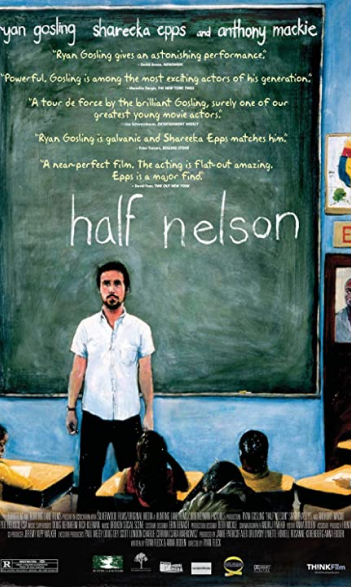
Half Nelson depicts the unlikely friendship between a Brooklyn junior high school teacher with a bad drug habit and one of his students, Drey, after she discovers his secret.
The film is not about drugs, but rather, the journey of overcoming addiction through the basis of friendship and doing right by those closest.

Ryan Gosling gives a stellar performance as Dan, a washed-up teacher who lights up in the classroom before sinking back into a dark world of cocaine and self-loathing.

Half Nelson is a realistic portrayal of a teacher who tries to stay afloat for the sake of his students despite his addiction. It is a thoughtful display of human nature and highlights that one bad decision doesn’t make you a bad person. Everyone deserves a second chance, and Dan receives his through the help and friendship of Drey.

Chapter 5
Offering New Perspectives
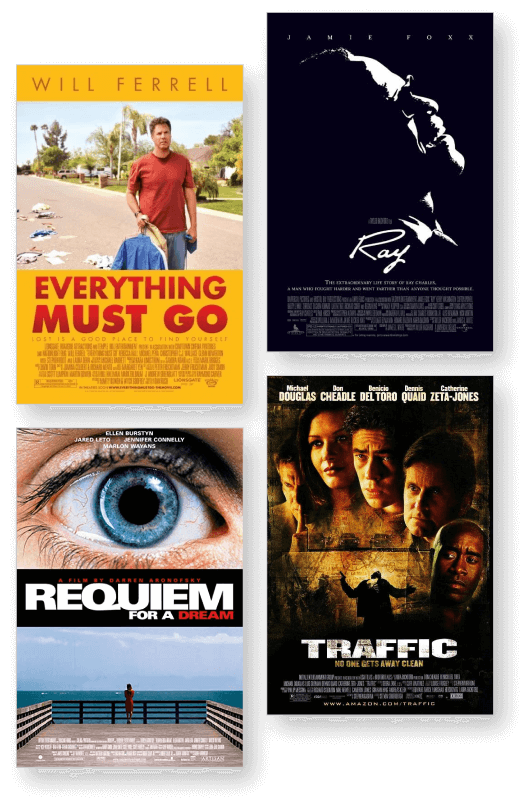
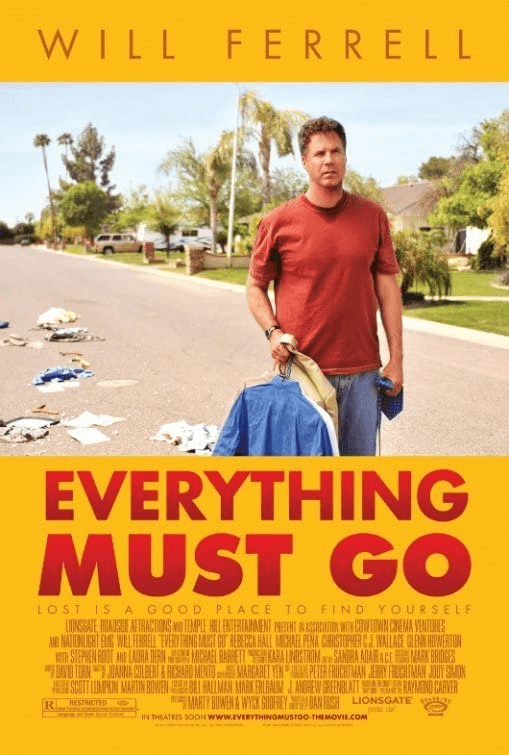

Taking on a different style from his usual roles, Will Ferrell stars in a dark comedy/ drama as Nick- a blundering alcoholic who, after losing everything important to him, holds a yard sale on his front lawn in an attempt to start over.
Everything Must Go looks at the adverse effects alcoholism can have on a person’s career and personal life. Perhaps what makes this film so realistic is the portrayal of Nick.

He is not a violent raging drunk but a good man who, somewhere down the line, had lost his way. As the film progresses, we learn more about Nick and his previous attempts at recovery before his world came crashing down. He is relatable, and as an audience, we are rooting for him, much like the community surrounding him.

Smashed is an American drama directed by James Ponsoldt following the unfortunate life of Kate Hannah, whose marriage is founded on a mutual love for alcohol. After her drinking problem threatens to ruin her career as an elementary school teacher, she decides to give sobriety a try.
The film serves as a grim wake-up call for those struggling with alcohol addiction and also outlines the struggle of sharing your life with someone who enables your bad habits and reckless lifestyle. Smashed offers an insight into the nuances of addiction and recovery. It is a classic representation of, ‘once you hit rock bottom, there’s nowhere left to go but up.

Flight is an action-packed drama/ thriller starring Denzel Washington as Whip Whitaker, a pilot who saves an aircraft from crashing after a mid-air crisis, saving everyone onboard. After the crash, Whip is recognized as a hero, but it is soon made apparent that Whip was under the influence of drugs and alcohol while flying the plane.
Denzel Washington gives a sympathetic and effective performance as he takes us on a journey depicting the hold addiction can have on you. Flight shows us the realities of an addict’s lifestyle, sacrificing important relationships in favor of the bottle, and how it often gets worse before it gets better- but it does get better.

After losing his friend Amy Winehouse to an overdose, Russel Brand reflects on his own struggles with addiction in a hard-hitting documentary. Brand offers a different ending to Amy’s narrative, showing those suffering that there is a way out.
After hitting rock bottom and being told he has 6 months left to live unless he curbs his heroin addiction, Brand offers a deeply personal yet widely inspiring insight into his journey to getting clean. Challenging society’s conventional opinions of addiction, drawing insights from professional psychologists, and providing his own methods to sustain complete abstinence, Brand intends for his story to instil hope in those plagued by addiction and enlighten those that know little about it.

There was not a dry eye to be seen leaving the theatres after watching A Star Is Born on its release in 2018. This powerful drama starring Bradley Cooper and Lady Gaga depicts the heartbreaking consequences of long-term substance abuse and the pain it can cause those who are forced to watch their loved ones suffer.

The story follows Jack, a successful musician who falls for a talented and aspiring young singer, Ally, after a chance encounter at a bar. Jack helps Ally rise to fame after coaxing her to sing at one of his biggest concerts, but his deep-rooted struggle with drug and alcohol abuse starts to cause rifts in his career and personal life.
A Star Is Born is a beautifully tragic story about a man who is plummeting to the very bottom and a woman who is soaring to the very top.

Recovering from drug addiction isn’t always a straight road. Many relapse countless times before maintaining sobriety, and supporting a loved one through this can often feel like fighting a losing battle.

Beautiful Boy starring Steve Carell and Timothee Chalamet, is an intense portrayal of the ways a consuming addiction can consume everyone around you as well.

It is the story of a helpless father trying to do everything in his power to save his son from his destructive meth addiction, to no avail. You can see the desperation in the father as his son’s suffering becomes his own, and the fear of losing him to the illness grows stronger with every relapse.
The bond and unconditional love between father and son displayed throughout this film are incredibly moving. It shows the ugliness of addiction from a parents’ perspective and outlines a story that many families can relate to.



Rounding off our deep dive into the history of addiction and sobriety in cinema, we have the award-winning 2019 biopic depicting Elton John’s struggle with SUDs as he rises to fame in the music industry.
We see John coping with various traumas in his life by turning to substance abuse and isolating himself away from those that care about him most.
By the end of the film, John admits himself to a rehab center after coming to terms with his problems. Sharing his life story in such an open, destigmatizing way, Elton John is paving the road to recovery for those who can relate to it.
Chapter 6
The Future Of Addiction And Sobriety Representations In Film?
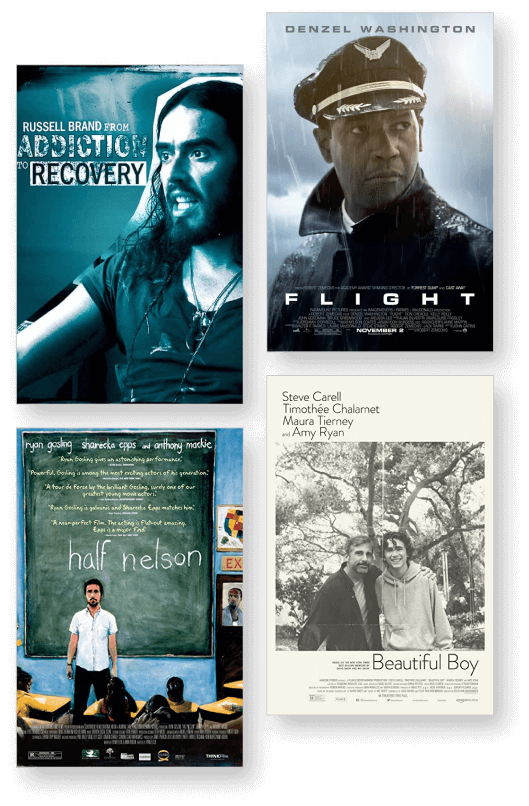
There is no doubt that films of recent years have illustrated a more truthful and compassionate depiction of addiction with an underlying message to the world pleading for more to be done to combat the illness.
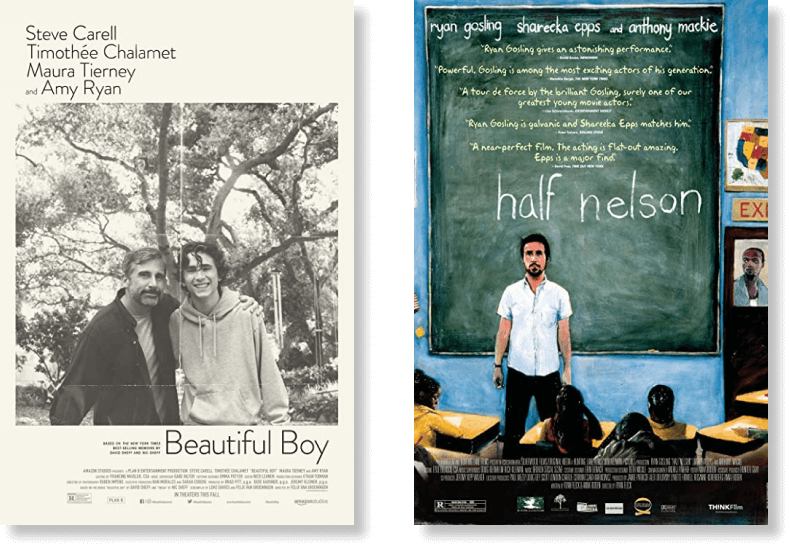
Films like Beautiful Boy and Half Nelson depict addicts as everyday people who have found themselves in a situation that is difficult to escape from.
They are not fundamentally evil characters, just someone who has run into a string of bad luck that has left them with no other way of coping.
When it comes to breaking negative stereotypes, there is no greater weapon than authenticity. We hope that the future of drug and alcohol abuse in cinema will continue to be viewed through a sympathetic lens.
Straying away from vilified representations of addiction and recognizing the complex nature of the disease will encourage more people to seek help, offering a warmer perspective on the suffering of those with SUD.
